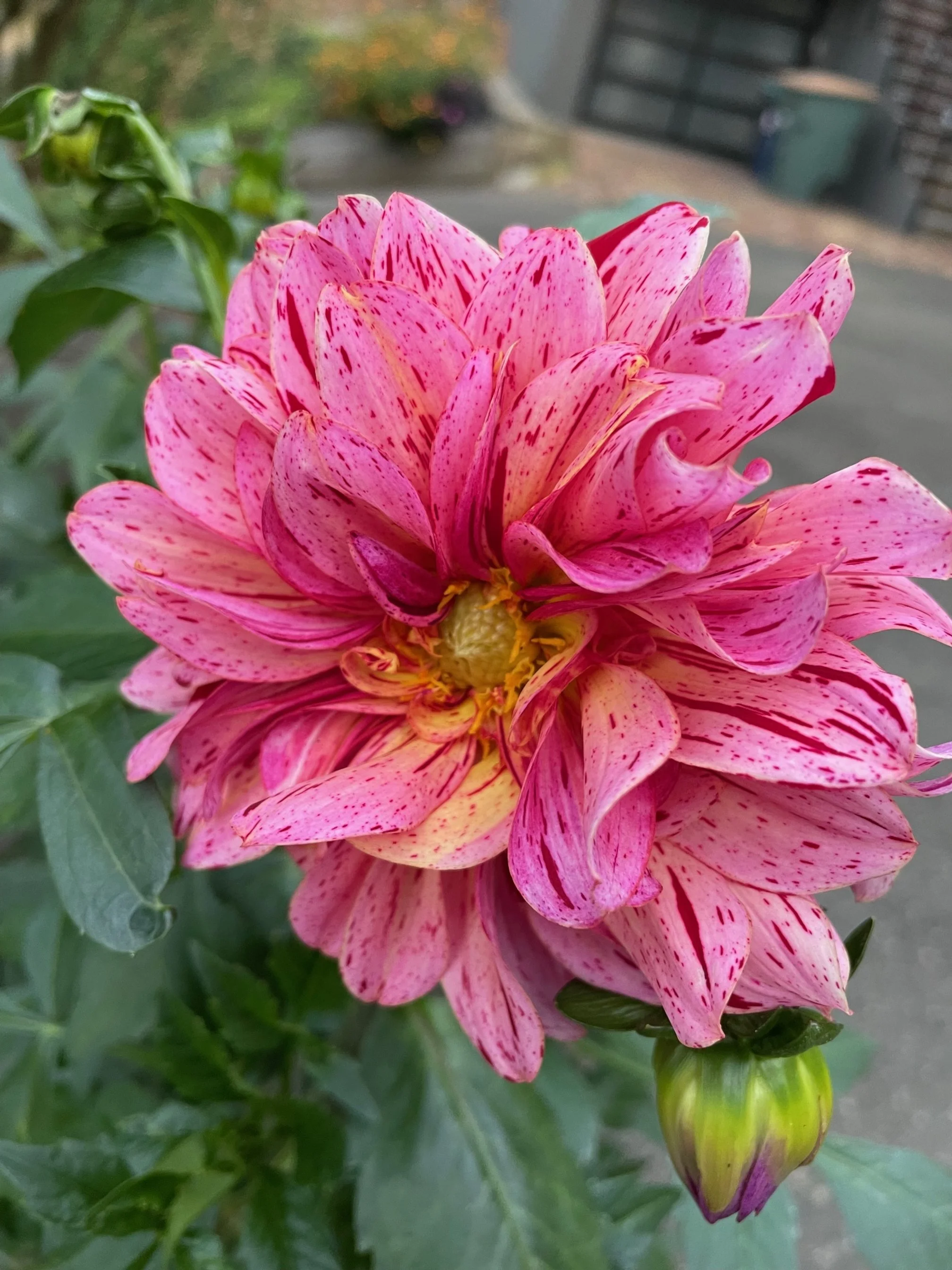Growing dahlias.
Dahlias require a fertile, moist but well-drained soil, and a sunny, sheltered spot. The taller varieties need staking. In autumn, dig up the tubers and overwinter them in a frost-free place, such as a greenhouse, shed, or garage. Bring them back into growth in early April, then plant out in the garden from May onwards.
-
Planting.
For best results choose a full sun location (6 hours or more) where the soil is rich and well-drained. Dahlias can grow in a half day of sun, but fewer blooms will result. In the fall or winter, dig in composted manure where dahlias are to be planted the following spring. Plant after the danger of frost is over. Work the soil to a depth of about 9 inches, then make an 8-9 inch diameter hole. When planting a dahlia variety that will grow to 36 inches or more, place a stake in the hole before planting. Place the tuber or crown with the eye(s) closest to the stake. This way the stem will grow closest to the stake for support when the plant is fully grown.
Add a handful of bone meal, a layer of soil, and at a depth of about 6 inches, place the tuber or crown in an almost upright position. The eyes or buds should point upwards. If you feel uncertain when planting, try imagining a clock with the eye at 12 o’clock (top) and the tuber(s) at 5 o’clock. Cover with about 2 inches of soil. Unless it is a very dry season, you won’t need to water until shoots appear above ground.
A good way to get a head start with your dahlias is to pot the tubers 4-6 weeks before the last frost date, then move them outdoors after the danger of frost is over. In this scenario, keep eyes just above the soil line, and the container in a warm, bright-as-possible location. Water once and not again until sprouts appear. Water about 6 hours before transplanting. Then gently transplant the entire contents of the pot to the garden or appropriate container with the tuber tops just below the soil surface. It is important not to disturb the roots.
-
Stopping.
When the plants have produced about four pairs of leaves, snip out the topmost tip.. Side shoots will develop to form the main body of the plant. For optimum bloom size and plant growth, many gardeners remove buds from side shoots but retaining the main center bud. Side buds appearing very early can be removed. From planting time to bloom will be about 2 1/2 months.
-
Feeding.
Avoid fertilizing for about six weeks after planting. A granular bloom boosting organic fertilizer can be used as directed on the package. Water soluble fertilizers can be used (after buds appear) every 3 to 4 weeks. Fertilizers with a low nitrogen are recommended in order to avoid small blooms and weak stems.
-
Lifting and storing.
In the PNW, many gardeners leave dahlia tubers in the ground year-round. If over time, however, dahlias begin losing vigor and produce fewer flowers, it’s a sure sign the tuberous roots are overcrowded and need dividing.
Dig up your dahlias after first frost.
Once the dahlia foliage has started to die down, dig all around the clump and lift the tubers with a fork, taking great care not to damage them with the fork spikes. Shake off as much soil as you can. Then, using secateurs, cut down the dahlia stems and compost the leaves.
Rinse the tubers.
Use a hose or bucket of water to thoroughly rinse the soil off the dahlia tubers, and then stand the tubers upside down to dry.
Pack the tubers.
Once dry, pack your dahlia tubers in a box or pot, and cover them with dry compost (it’s important to ensure the compost is dry, as damp compost could lead to your tubers rotting in store). You can also store dahlia tubers in vermiculite, or wrap them in dry newspaper. Once packed into their pots, store your tubers in a frost-free place, such as under the greenhouse staging, in a dry shed or garage.
If your dahlias are in a warm, sheltered spot in the border and you don’t want to lift them, add a thick layer of mulch for extra insulation in winter.
-
Dividing.
Crowns may be divided in the fall or in the spring (which we recommend). Spring is the easiest time to see the eyes from which new shoots will form. If the eyes are difficult to find, try cutting the clump or crown division of tubers in half. Allow cuts to dry before planting the crown division. Single tubers which have broken off and have no eye may be discarded. Each root or crown division must have an eye if it is to grow and bloom.

